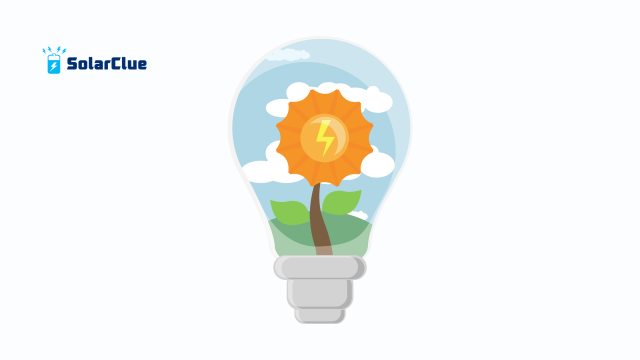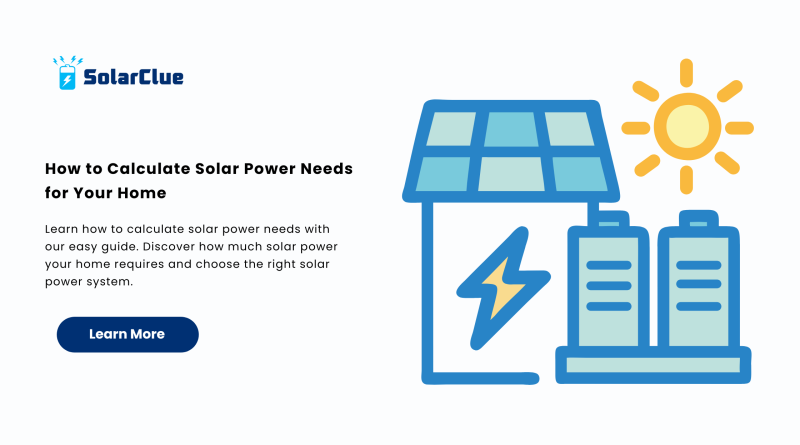How to Calculate Solar Power Needs for Your Home
Switching to solar is one of the smartest decisions you can make for your wallet and the planet. However, before investing in a solar power system, it’s crucial to understand how much solar power your home or business actually needs. This ensures that your system is both efficient and cost-effective.
Table of Contents
- 1 Why Understanding Solar Power Needs Matters
- 2 Step-by-Step Guide to Calculate Solar Power Needs
- 3 Factors That Influence Solar Power Needs
- 4 Tools to Help Calculate Solar Power
- 5 Types of Solar Power Systems
- 6 Benefits of Accurate Solar Calculation
- 7 Mistakes to Avoid When Calculating Solar Needs
- 8 How Many Solar Panels Will You Need?
- 9 Battery Storage: Do You Need It?
- 10 Net Metering and Government Incentives
- 11 Consulting a Solar Expert
- 12 Monitoring and Maintaining Your System
- 13 Real-World Example
- 14 Conclusion
- 15 FAQs
Why Understanding Solar Power Needs Matters
Choosing the right solar power system starts with understanding your solar energy requirements. Oversizing can lead to unnecessary costs, while undersizing can fail to meet your power demands. By calculating your energy needs accurately, you optimize your investment in renewable energy.
Step-by-Step Guide to Calculate Solar Power Needs
1. Analyze Your Electricity Bills
Start by gathering your electricity bills from the past 12 months. Look at the total kilowatt-hours (kWh) you consume monthly. This helps you determine your average daily energy usage.
Formula: Monthly kWh ÷ 30 = Daily Energy Use in kWh
2. Determine Peak Sunlight Hours
Solar energy production varies by location. Identify the average peak sunlight hours in your area (typically 4-6 hours per day in India).
3. Calculate Solar Panel Output Requirement
Formula: Daily Energy Use ÷ Peak Sun Hours = Solar System Size (kW)
For example, if you use 30 kWh per day and get 5 sun hours: 30 ÷ 5 = 6 kW system
4. Adjust for System Efficiency Losses
Account for energy losses due to inverter inefficiencies, dirt, temperature, and wiring. Typically, assume 20% loss.
Formula: Required System Size ÷ 0.80 = Final System Size
In our example: 6 ÷ 0.80 = 7.5 kW system
Factors That Influence Solar Power Needs

Household Energy Consumption
Larger homes with more appliances consume more electricity, requiring a larger solar power system.
Climate and Location
Regions with more sun exposure will require smaller systems compared to cloudy or high-latitude areas.
Roof Space and Orientation
The number of panels you can install depends on your available roof space and its orientation.
Future Energy Use
If you plan to buy electric vehicles or new appliances, factor those into your energy needs.
Tools to Help Calculate Solar Power
Online solar calculators can simplify the estimation process. They often require inputs like ZIP code, roof size, and average electricity use.
Types of Solar Power Systems
On-Grid Systems
Connected to the utility grid; excess power can be exported for credits.
Off-Grid Systems
Independent systems ideal for remote areas; require battery storage.
Hybrid Systems
Combine on-grid and off-grid features for maximum flexibility and backup.
Benefits of Accurate Solar Calculation
- Reduced electricity bills
- Optimized solar investment
- Lower carbon footprint
- Enhanced property value
Mistakes to Avoid When Calculating Solar Needs
- Ignoring seasonal variations
- Not accounting for future power usage
- Overlooking panel orientation and shading
- Not consulting professionals
How Many Solar Panels Will You Need?
Formula: Total kW Needed ÷ Panel Wattage = Number of Panels
If you need 7.5 kW and use 375W panels: 7500 ÷ 375 = 20 panels
Battery Storage: Do You Need It?
For off-grid or hybrid systems, batteries store unused power for nighttime or cloudy days. Consider your location, power reliability, and usage patterns before deciding.
Net Metering and Government Incentives
Net metering allows you to sell excess energy back to the grid. Also, many regions offer subsidies for renewable energy adoption.
Consulting a Solar Expert
A professional installer can provide an on-site evaluation, accurate calculation, and custom system design tailored to your needs.
Monitoring and Maintaining Your System
Regular maintenance ensures optimal performance. Use monitoring apps to track your solar energy generation and consumption in real time.
Real-World Example
A 3-bedroom home in Bangalore uses 900 kWh per month. That’s 30 kWh/day. With 5 sun hours, a 6 kW system is needed. Factoring in 20% losses, a 7.5 kW solar power system with 20 panels is ideal.
Conclusion
Calculating your solar power needs is a vital first step toward energy independence and cost savings. By analyzing your usage, location, and goals, you can choose a system that truly fits your needs.
For expert guidance and a wide range of reliable solar solutions, visit us at solarclue.com and explore detailed guides and tips on blog.solarclue.com. Empower your future with smart renewable energy choices today!
FAQs
1. How many solar panels do I need for a 3BHK home?
Typically, a 3BHK home needs around 18-22 panels depending on usage and location.
2. What if my area receives less sunlight?
You may need a larger solar power system or a hybrid setup to compensate for reduced sunlight.
3. Can I go completely off-grid?
Yes, but you’ll need battery storage and a larger system. It’s ideal for remote areas.
4. How do I know if my roof is suitable for solar?
Check for shade, direction, and space. South-facing roofs with minimal obstructions are best.
5. How much can I save with solar?
Savings vary, but most users see a 50-90% reduction in electricity bills within the first year.




